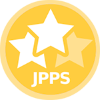Influence of pheromones for integrated pest management, review 2012-2022
DOI:
https://doi.org/10.5377/elhigo.v13i2.17387Keywords:
Attractants, capture, infochemicals, trapsAbstract
Insects communication is mediated by various infochemical compounds, which provide information to individuals and generate a physiological response in the receptor. Due to their attributes and low environmental impact, they are tools that can be integrated into management plans for several species of potentially harmful insects. Therefore, the objective of this paper is to make a synthesis of the published documents associated with pheromones in productive systems. For the development of this paper, a systematic review of information was made through the database of the library of the National University of Colombia. A bibliometric analysis was carried out with two search components for the period from 2012 to 2022, using terms associated with the main theme as keywords. A total of 357 different types documents were identified, the most relevant source associated with the topic consulted is the Journal of Economic Entomology, Insects followed by the Journal of Chemical Ecology. The countries with the highest number of published documents are the United States, Italy and Canada, and the author with the highest number of local citations is J. F. Campbell. Documents associated with research were found for the orders Coleoptera, Diptera, Hemiptera and Lepidoptera.
Downloads
References
Akotsen-Mensah, C., Kaser, J. M., Leskey, T. C., & Nielsen, A. L. (2018). Halyomorpha halys (Hemiptera: Pentatomidae) Responses to Traps Baited With Pheromones in Peach and Apple Orchards. JOURNAL OF ECONOMIC ENTOMOLOGY, 111(5), 2153–2162. https://doi.org/10.1093/jee/toy200
Antony, B., Johny, J., & Aldosari, S. A. (2018). Silencing the Odorant Binding Protein RferOBP1768 Reduces the Strong Preference of Palm Weevil for the Major Aggregation Pheromone Compound Ferrugineol. Frontiers In Physiology, 9. https://doi.org/10.3389/fphys.2018.00252
Aria, M., & Cuccurullo, C. (2017). bibliometrix: An R-tool for comprehensive science mapping analysis. Journal of Informetrics, 11(4), 959–975. https://doi.org/https://doi.org/10.1016/j.joi.2017.08.007
Belda, C., & Riudavets, J. (2013). Natural enemies associated with lepidopteran pests in food and feed processing companies. Journal Of Stored Products Research, 53, 54–60. https://doi.org/10.1016/j.jspr.2013.02.006
Chen, Q. H., Zhu, F., Tian, Z. H., Zhang, W. M., Guo, R., Liu, W. C., Pan, L. M., & Du, Y. J. (2018). Minor Components Play an Important Role in Interspecific Recognition of Insects: A Basis to Pheromone Based Electronic Monitoring Tools for Rice Pests. INSECTS, 9(4). https://doi.org/10.3390/insects9040192
Chen, X. M., Wang, X. Y., Lu, W., & Zheng, X. L. (2021). Current understanding of the development of sex attractant-based biocontrol in burnet moths. Journal Of Asia-Pacific Entomology, 24(3), 933–939. https://doi.org/10.1016/j.aspen.2021.08.002
Cui, G. Z., & Zhu, J. J. (2016). Pheromone-Based Pest Management in China: Past, Present, and Future Prospects. Journal Of Chemical Ecology, 42(7), 557–570. https://doi.org/10.1007/s10886-016-0731-x
Ferracini, C., Saitta, V., Pogolotti, C., Rollet, I., Vertui, F., & Dovigo, L. (2020). Monitoring and Management of the Pine Processionary Moth in the North-Western Italian Alps. FORESTS, 11(12). https://doi.org/10.3390/f11121253
Flores, M. F., Bergmann, J., Ballesteros, C., Arraztio, D., & Curkovic, T. (2021). Development of Monitoring and Mating Disruption against the Chilean Leafroller Proeulia auraria (Lepidoptera: Tortricidae) in Orchards. INSECTS, 12(7). https://doi.org/10.3390/insects12070625
Gerken, A. R., & Campbell, J. F. (2019). Using Long-term Capture Data to Predict Trogoderma variabile Ballion and Plodia interpunctella (Hubner) Population Patterns. INSECTS, 10(4). https://doi.org/10.3390/insects10040093
Gregg, P. C., Del Socorro, A. P., & Landolt, P. J. (2018). Advances in Attract-and-Kill for Agricultural Pests: Beyond Pheromones. En M. R. Berenbaum (Ed.), Annual Review Of Entomology, Vol 63 (Vol. 63, pp. 453–470). https://doi.org/10.1146/annurev-ento-031616-035040
Guerrero, S., Brambila, J., & Meagher, R. L. (2014). Efficacies Of Four Pheromone-Baited Traps in Capturing Male Helicoverpa (Lepidoptera: Noctuidae) Moths in Northern Florida. florida entomologist, 97(4), 1671–1678. https://doi.org/10.1653/024.097.0441
Kirkpatrick, D. M., Gut, L. J., & Miller, J. R. (2018). Estimating monitoring trap plume reach and trapping area for Drosophila suzukii (Diptera: Drosophilidae) in Michigan tart cherry. Journal of economic entomology, 111(3), 1285–1289.
Levi-Zada, A., Fefer, D., Madar, R., Steiner, S., & Kaspi, R. (2020). Evaluation of pheromone of false codling moth Thaumatotibia leucotreta in Israel by sequential SPME/GCMS analysis and field trials. Journal Of Pest Science, 93(1), 519–529. https://doi.org/10.1007/s10340-019-01138-0
Lofstedt, C., Svensson, G. P., Jirle, E. V, Rosenberg, O., Roques, A., & Millar, J. G. (2012). (3Z,6Z,9Z,12Z,15Z)-pentacosapentaene and (9Z,11E)-tetradecadienyl acetate: sex pheromone of the spruce coneworm Dioryctria abietella (Lepidoptera: Pyralidae). Journal Of Applied Entomology, 136(1–2), 70–78. https://doi.org/10.1111/j.1439-0418.2011.01619.x
Luo, Z. X., Magsi, D. H., Li, Z. Q., Cai, X. M., Bian, L., Liu, Y., Xin, Z. J., Xiu, C. L., & Chen, Z. M. (2020). Development and Evaluation of Sex Pheromone Mass Trapping Technology for Ectropis grisescens: A Potential Integrated Pest Management Strategy. INSECTS, 11(1). https://doi.org/10.3390/insects11010015
Malo, E. A., Cruz-Esteban, S., Gonzalez, F. J., & Rojas, J. C. (2018). A Home-Made Trap Baited With Sex Pheromone for Monitoring Spodoptera frugiperda Males (Lepidoptera: Noctuidae) in Corn crops in Mexico. Journal Of Economic Entomology, 111(4), 1674–1681. https://doi.org/10.1093/jee/toy128
Malo, E. A., Gutierrez-Escobar, V., Castrejon-Ayala, F., & Rojas, J. C. (2020). The Aggregation Pheromone of Metamasius spinolae (Coleoptera: Dryophthoridae) Revisited: Less is More. Environmental Entomology, 49(4), 803–809. https://doi.org/10.1093/ee/nvaa054
Masetti, A., Butturini, A., Lanzoni, A., De Luigi, V., & Burgio, G. (2015). Area-wide monitoring of potato tuberworm (Phthorimaea operculella) by pheromone trapping in Northern Italy: phenology, spatial distribution and relationships between catches and tuber damage. Agricultural And Forest Entomology, 17(2), 138–145. https://doi.org/10.1111/afe.12089
McKay, T., White, A. L., Starkus, L. A., Arthur, F. H., & Campbell, J. F. (2017). Seasonal Patterns of Stored-Product Insects at a Rice Mill. Journal Of Economic Entomology, 110(3), 1366–1376. https://doi.org/10.1093/jee/tox089
Molnar, B. P., Troger, A., Toshova, T. B., Subchev, M., van Nieukerken, E. J., Koster, J. C., Szocs, G., Toth, M., & Francke, W. (2012). Identification of the Female-Produced Sex Pheromone of Tischeria ekebladella, an Oak Leafmining Moth. Journal Of Chemical Ecology, 38(10), 1298–1305. https://doi.org/10.1007/s10886-012-0184-9 W
Oleander, A., Hall, D. R., Bray, D. P., & Burman, J. P. J. (2019). Identification of Female Sex Pheromone for Monitoring the Barred Tooth Striped Moth, Trichopteryx polycommata, a Priority Conservation Species. Journal Of Chemical Ecology, 45(8), 649–656. https://doi.org/10.1007/s10886-019-01093-1
Porcel, M., Sjöberg, P., Swiergiel, W., Dinwiddie, R., Rämert, B., & Tasin, M. (2015). Mating disruption of Spilonota ocellana and other apple orchard tortricids using a multispecies reservoir dispenser. Pest management science, 71(4), 562–570.
R Core Team. (2020). R: A Language and Environment for Statistical Computing. R Foundation for Statistical Computing.
Reisenman, C. E., Lei, H., & Guerenstein, P. G. (2016). Neuroethology of Olfactory-Guided Behavior and Its Potential Application in the Control of Harmful Insects. Frontiers in physiology, 7. Https://doi.org/10.3389/fphys.2016.00271
Reyes-Prado, H., Segura, A. J. G., Martinez-Peralta, C., & Sosa, P. R. G. (2020). Non-target Insects Captured in Sex Pheromone Traps of Spodoptera frugiperda in Sorghum Surrounded by Other Crops and Weeds. southwestern entomologist, 45(3), 643–648. https://doi.org/10.3958/059.045.0307
Sandoval-Cáceres, Y. P., Cruz-Castiblanco, G. N., Diaz-Ortiz, M. C., & Barreto-Triana, N. (2022). Bases conductuales para la identificación de la feromona sexual de Diatraea saccharalis (Fabricius, 1794)(Lepidoptera: Crambidae) en Cundinamarca, Colombia. Revista Chilena de EntomologÍa, 48(3).
Downloads
Published
How to Cite
Issue
Section
License
Copyright (c) 2023 Universidad Nacional de Ingeniería

This work is licensed under a Creative Commons Attribution-NonCommercial-NoDerivatives 4.0 International License.
Los artículos publicados en la revista El Higo, Nicaragua, se comparten bajo términos de la licencia Creative Commons: Reconocimiento, No Comercial, Compartir Igual. que permite a terceros utilizar lo publicado siempre que mencionen la autoría del trabajo y a la primera publicación en esta revista. ![]()
Los autores/as pueden realizar otros acuerdos contractuales independientes y adicionales para la distribución no exclusiva de la versión del artículo publicado en esta revista (p. ej., incluirlo en un repositorio institucional o publicarlo en un libro) siempre que indiquen claramente que el trabajo se publicó por primera vez en esta revista.






